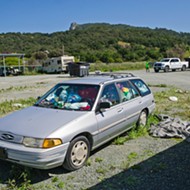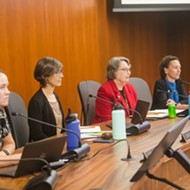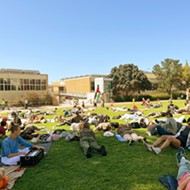[{
"name": "Newsletter Promo",
"id": "NewsletterPromo",
"class": "inlineCenter",
"insertPoint": "4",
"component": "15264767",
"requiredCountToDisplay": "0"
},{
"name": "Ad - Medium Rectangle CC01 - 300x250",
"id": "AdMediumRectangleCC01300x250",
"class": "inlineCenter",
"insertPoint": "8",
"component": "2963441",
"requiredCountToDisplay": "12"
},{
"name": "Ad - Medium Rectangle LC01 - 300x250",
"id": "AdMediumRectangleCC01300x250",
"class": "inlineCenter",
"insertPoint": "18",
"component": "2963441",
"requiredCountToDisplay": "22"
},{
"name": "Ad - Medium Rectangle LC09 - 300x250",
"id": "AdMediumRectangleLC09300x250",
"class": "inlineCenter",
"insertPoint": "28",
"component": "3252660",
"requiredCountToDisplay": "32"
}]
For some, getting a tattoo removed hurts more then it getting it put on. For Seth Souza, the laser removal didn't hurt at all.
Souza, like others at the Liberty Tattoo Removal Clinic, is just happy to have the inked vestige of his former life removed, permanently.
On his first day out of prison six years ago, Souza got "pain" tattooed on the back of his neck, and since he started to walk the line five years ago, his neck tat has been nothing but, literally, a pain in the neck.
Before undergoing his seventh removal session, all for the "pain" tattoo, Souza said he's had numerous job interviews that go great until he gets up to leave and they see the back of his neck. Then he gets the call.
"Do you have something to tell us?" they'll ask.
Souza has been working at the Economic Opportunity Commission (EOC) thrift store for the last five years, and it was about seven months ago that he decided to get his neck tattoo removed so he could pursue a career in law enforcement. He then got going on the required 16 hours of community service for his first laser removal session. Now, seven sessions in and 112 community service hours later, Souza said he probably has six more months of treatment before his tat is finally permanently dissolved.
Souza will keep the Chinese symbols on his arms because he can always wear long sleeves, but now that his neck tattoo will be gone, he's happy he can apply for a job without the stigma of a visible tattoo working against him.
After waiting in a room at Sierra Vista with about 20 others for the laser treatment, Souza got called in to Dr. R. Jeffrey Herten's office. Three assistants handed Souza a pair of goggles and pretty quickly the doctor had the laser, which resembles a swing-arm desk lamp, near Souza's neck. The laser fires 10 times a second, Dr. Herten told me. It popped sharply as Dr. Herten traced the letters N, I, A, and P of Souza's tattoo. Then it was over and the next of the 35 patients was brought in. All in a Sunday morning's volunteer work for Dr. Herten and his assistants.
Since New Times first wrote about the Liberty Tattoo Clinic ("Erasing Yesterday" Aug. 22, 2002), the clinic lost its federal funding after a public outcry, partly helped along by conservative talk-radio host Rush Limbaugh. Since then, the EOC, which runs the clinic, has sought funding from a variety of sources, including grants and local gifts. Current supporters include The United Way, PG&E, Wells Fargo, Sierra Vista, TENET, Dr. Herten, the Grizzly Youth Academy, and Criminal Justice Administrators of SLO County, which just gave an award of recognition to Herten and the director of Liberty Tattoo removal, Anita Broughton.
"The great thing about the program is how removing a tattoo will change someone's life. It opens doors for them," said Tony Aeilts, chief of Cal Poly Police and chairman of the Criminal Justice Administrators Association of SLO County. "It's one of those [programs] that unless you know about it, you don't know about the impact on the community."
Broughton said it can be hard to secure grant money because the program is so community-focused. She's hopeful that the clinic is about to receive money from the L.A. County Probation Department, which utilizes the program through the Grizzly Youth Academy. The $5,000 grant "looks like it should work out," said Broughton, Liberty's only paid employee.
"We've never had a horrible time getting funding," she continued. "This is really a community program, so the community really has to support it."
Considering that each person who uses the clinic must do 16 hours of community service for each session, the length that $5,000 goes is quite staggering. The day I was at Sierra Vista to meet some of the people involved, there were at least 20 waiting for the laser. Broughton said that there are normally about 80 people in the program at any given time, though because of the required healing between sessions, individuals don't come in every month.
According to an informational sheet, in order to qualify for removal, individuals must have tattoos that are "gang-related or antisocial, preventing [them] from finding employment or interfering with [their] life." The sheet lists the most common reasons for getting tattoos removed as being a better role model for children, availability of better employment opportunities, and the necessity of leaving old lifestyles behind.
For Seth Souza, 16 hours of community service equaled about two minutes under Dr. Herten's laser, but there's no doubt it's definitely worth it.
For more information on EOC's Liberty Tattoo Clinic, contact Anita Broughton at 781-1285. ³
Staff Writer John Peabody has no identifying marks. Lay one on him at jpeabody@
newtimsslo.com.
Latest in News
Readers also liked…
-

Coast Unified teachers upset over new position's salary and qualifications
Oct 20, 2022 -

SLO police identify alleged driver who hit and killed couple
Dec 22, 2022 -

When the levee breaks: Oceano residents, county officials walk a tightrope of regulations to manage Arroyo Grande Creek, which some say led to the levee's failure in January
May 18, 2023








